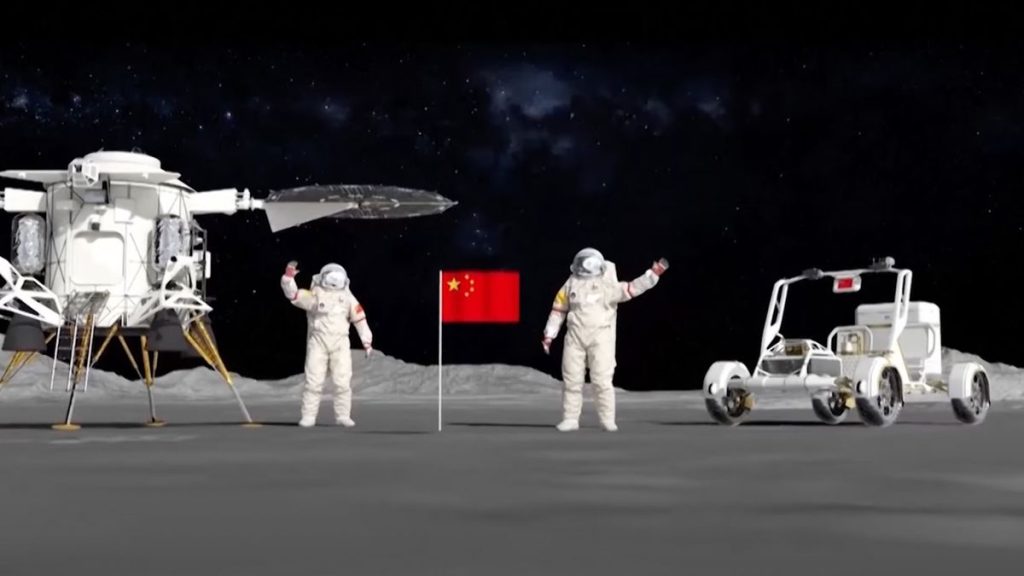
How China plans to put astronauts on the moon by 2030 (video) (Image Credit: Space.com)
China’s human spaceflight agency has released a video detailing its plans for a first crewed mission to the moon, including progress on lunar hardware.
The promotional video, published by the China Manned Space Agency (CMSA) on Nov. 21, shows not only animations of planned activities but also tests on hardware being developed to make the moon mission possible.
China’s moon landing is planned to take place before 2030. It will involve two launches of the Long March 10 rocket, currently being developed, separately sending a crewed spacecraft, named Mengzhou, and a lunar landing stack, named Lanyue, into lunar orbit. There, the two spacecraft will dock and a pair of astronauts will transfer to Lanyue and descend to the lunar surface.
The video shows Lanyue on the moon with a lunar rover being deployed onto the surface. It then shows the astronauts operating the rover and driving along planned routes.
Related: How China will land astronauts on the moon by 2030
Also shown are a hotfire test of a Long March 10 first stage, a parachute deployment test during an airdrop, a separation test using a Lanyue prototype test article, the lunar extravehicular suit that will be worn by the astronauts and work on a Mengzhou crew spacecraft along with other ground tests and facilities.
Finally, the video shows a diagram detailing what the Wenchang Satellite Launch Center on Hainan island will look like when ready to host the lunar mission launches. Wenchang is China’s only coastal spaceport and hosts launches of the country’s current largest rocket, the Long March 5 series. The spaceport is being expanded to be capable of launching the larger Long March 10 and the future Long March 9 super heavy-lift launcher, which will look a lot like SpaceX‘s Starship.
Meanwhile, NASA is working on returning its astronauts to lunar surface for the first time since the end of the Apollo program. If all goes according to plan, that will happen with the Artemis 3 mission in late 2026.





